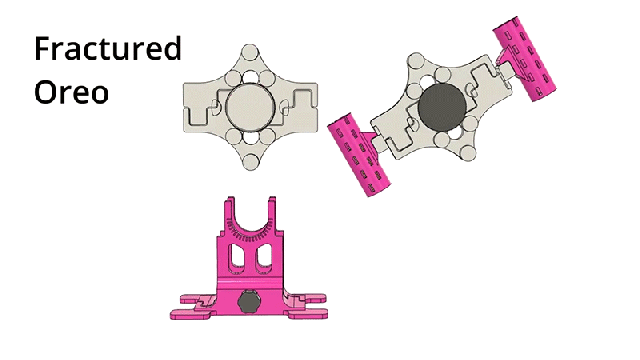A team of mechanical engineers at MIT recently developed an “Oreometer” to test the optimal way of separating the two halves of an Oreo cookie, so that the wafers and the creme filling inside remained unbroken.
It was an exercise in rheology, or the study of how matter flows. (They called this particular experiment “Oreology.”) The fluid in this case was the creme filling, a soft solid that the team classified as “mushy,” meaning it’s not very brittle (unlike a cracker) and is relatively soft (like bread).
Oreo creme is a yield stress fluid — a group that includes cookie dough, concrete, and lava. They are fluids that act as soft solids, meaning that they only flow, or change shape, when enough stress is applied to them. In the case of the cookies, that stress either comes from your hands opening the cookie or your teeth cutting to the chase.
The team built their Oreometer to test how different types of Oreos separate, paying particular attention to the creme distribution across the two wafers once the cookie split. Their research is published today in Physics of Fluids.
“Our favourite twist was rotating while pulling Oreos apart from one side, as a kind of peel-and-twist, which was the most reliable for getting a very clean break,” said Crystal Owens, a mechanical engineer at MIT and the lead author of the new paper, in an email to Gizmodo. “Peeling is intuitively well-known to cause adhesive failure, like when you want to remove a sticker from a surface without tearing the sticker itself.”
The Oreometer isn’t capable of peeling, so the team used it to twist the cookies. The cookie goes between the two clamps, and rubber bands on the clamps adjust torque on the wafers. As pennies are added to a chamber on one side, the clamp rotates, separating the cookie.
The researchers found that the creme would often stay on one side of the wafers (“Wafer 1”) rather than the other, which they believe is a result of how the Oreos are manufactured. They tested regular Oreos as well as the Double and Mega Stuf varieties, which have more creme filling, and didn’t report any apparent correlation between the amount of creme and how cleanly the cookie separated.
The team made the Oreometer design open source, so anyone can build their own device and collect data on Oreo separation and shear. Fry would be proud.
More: FDA Investigating Whether Lucky Charms Cereal Is Making People Sick
